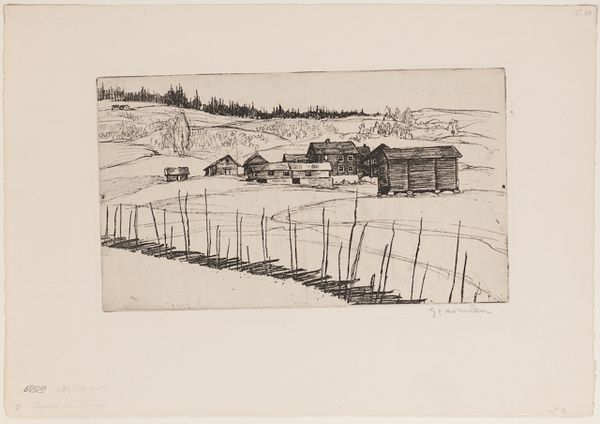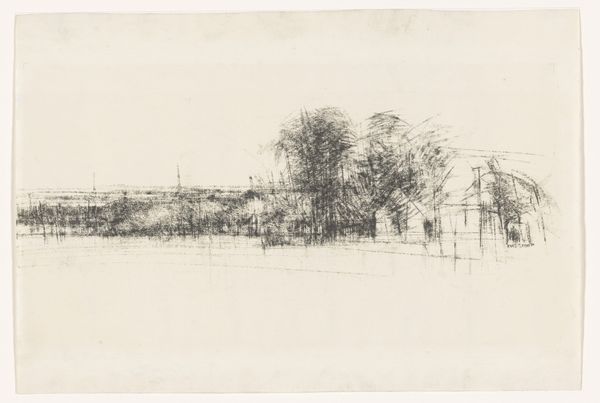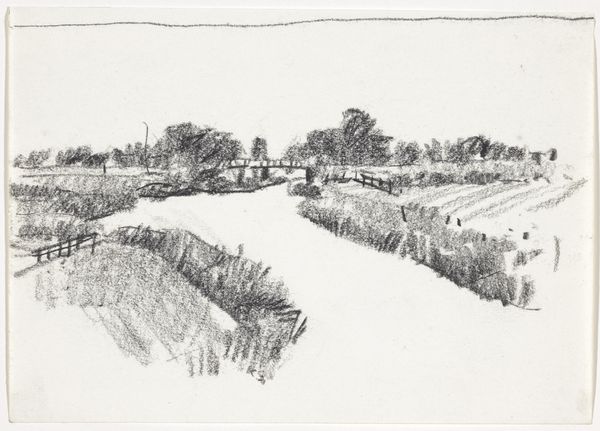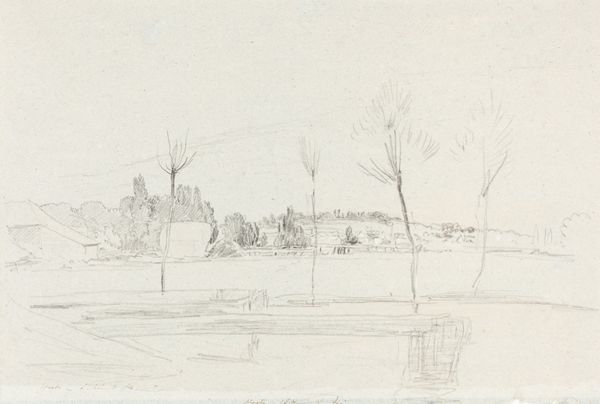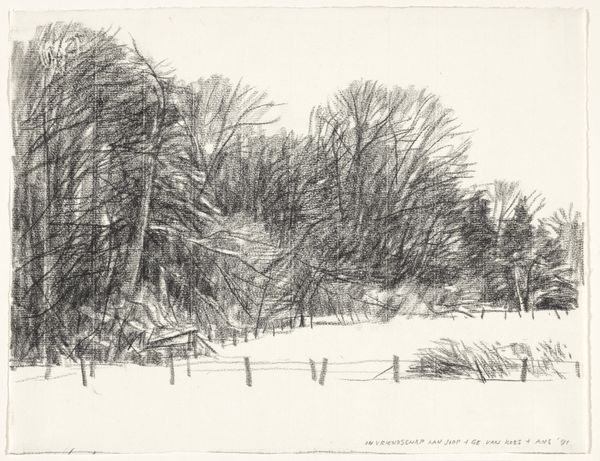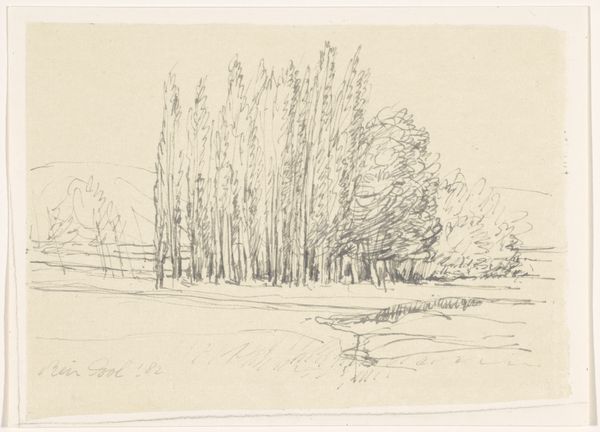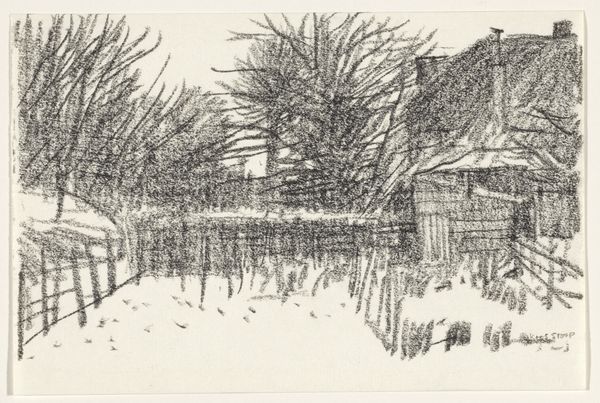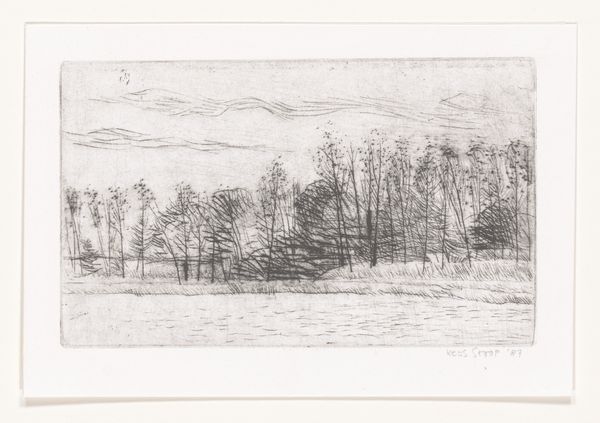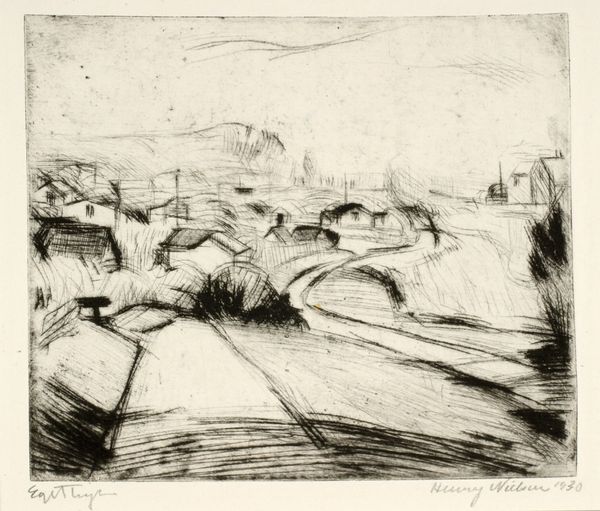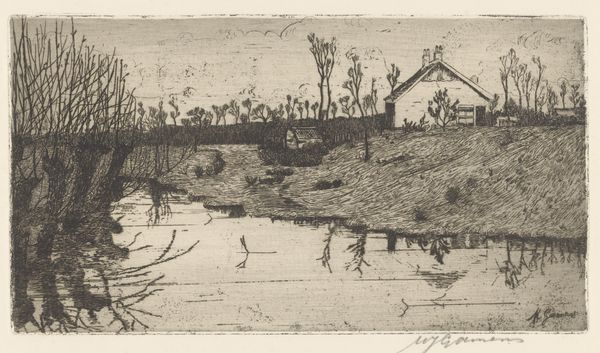
print, etching
#
dutch-golden-age
# print
#
etching
#
landscape
#
line
#
realism
Dimensions: height 140 mm, width 224 mm, height 120 mm, width 173 mm
Copyright: Rijks Museum: Open Domain
Editor: This print, "Dorp in vogelvluchtperspectief," which translates to "Village in Bird's Eye Perspective," is an etching by Kees Stoop, created sometime between 1944 and 1990, now held in the Rijksmuseum. It's predominantly a monochrome image using dense hatched lines, giving it a somewhat bleak, wintery feel, a landscape seemingly devoid of activity. What stands out to you about the social or cultural context in this etching? Curator: What strikes me is the representation of the landscape. Its social role is crucial; landscapes, throughout history, are rarely neutral. They are often tied to national identity, land ownership, and the power structures inherent in those systems. Consider the Dutch Golden Age landscape painting tradition. How might this later etching, while distinct in style, still engage with those established conventions? Editor: I suppose the very fact it's a bird's-eye view suggests a kind of ownership or survey of the land. A detached, perhaps even powerful perspective. Is the relative desolation then perhaps a commentary on post-war Dutch society? Curator: That's an insightful reading. The desolation could indeed be interpreted in multiple ways. Do you think it simply depicts a sparse landscape, or could the sparseness symbolize something beyond the visual, possibly alluding to societal conditions? Are there any details within the landscape that suggest human activity or its lack thereof? Editor: Well, I see a couple of small houses and what appear to be very roughly drawn paths, but everything looks abandoned or, at best, unattended. There aren't any people depicted at all. Curator: Precisely. And what kind of statement do you think is being made by presenting an environment seemingly devoid of activity and the signs of social engagement, and moreover displaying it at the Rijksmuseum? It certainly generates a strong message to the Dutch citizens about their landscape and what that means after war. Editor: I see what you mean. I initially saw bleakness but perhaps it’s a prompt for rebuilding. Thank you. Curator: And thank you; you’ve illuminated the work in a way I hadn't previously considered. This really exemplifies how looking at the historical moment is never one thing.
Comments
No comments
Be the first to comment and join the conversation on the ultimate creative platform.
